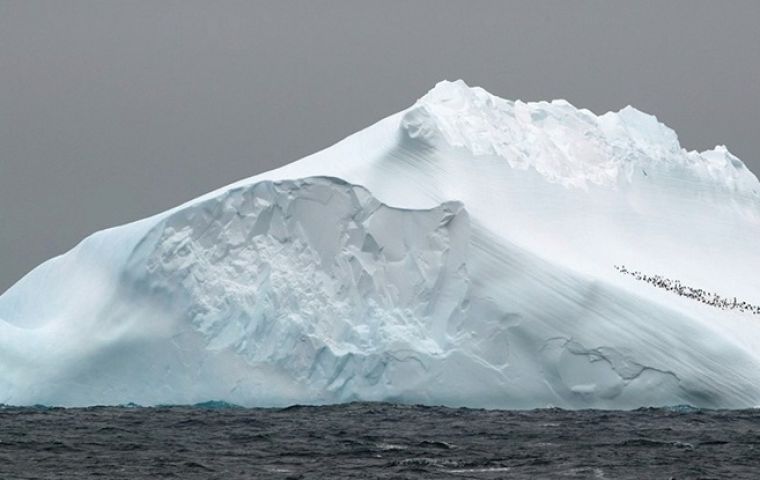MercoPress. South Atlantic News Agency
Oldest marine DNA in Antarctica retrieved
 SedaDNA remains intact in the area because of the cold temperatures, low oxygen, and a lack of UV radiation
SedaDNA remains intact in the area because of the cold temperatures, low oxygen, and a lack of UV radiation Researchers from Australia's University of Tasmania have reportedly found the oldest marine DNA in history in the Scotia Sea in Antarctica, according to an article carried by the journal Nature Communications. The study also involved scientists from the University of Bonn.
In 2019, marine ecologists extracted fragments of organic material from the ocean floor and then subjected them to a comprehensive contamination control process to ensure that the embedded age markers were accurate. They then detected that the sedimentary DNA sample was over one million years old, while also identifying single-celled organisms, known as diatoms, that are 540,000 years old.
The experts also found eukaryotic DNA that appeared to be 2.5 million years old, but they were cautious about this estimate.
The techniques used for analyzing this type of DNA -known as Sedimentary ancient DNA (sedaDNA) analysis- can also be applied to reconstructing past ecosystems, offering a new level of understanding of how the oceans changed and, at the same time, making it possible to better understand what could happen at the South Pole.
Antarctica is one of the most vulnerable regions to climate change and data from there can help predict how marine life in the area is going to respond in the future.
“This comprises by far the oldest authenticated marine sedaDNA to date,” explained Dr. Linda Armbrecht, the lead investigator from the University of Tasmania, Australia. Amongst the detected organisms were diatoms as key primary producers whose DNA was detected back to half a million years.
The data also shows that diatoms were consistently abundant during warm climatic periods. The last such change in the food web of the Scotia Sea occurred about 14,500 years ago. “This is an interesting and important change that is associated with a worldwide and rapid increase in sea levels and massive loss of ice in Antarctica due to natural warming,” added Dr. Michael Weber, second author of the study from the University of Bonn.
SedaDNA is found in many environments, including terrestrial caves and subarctic permafrost, where the material dates back up to 650,000 years, it was reported. The reason places like the Scotia Sea allow sedaDNA to remain intact is because of the cold temperatures, low oxygen, and a lack of UV radiation associated with polar marine environments




Top Comments
Disclaimer & comment rulesCommenting for this story is now closed.
If you have a Facebook account, become a fan and comment on our Facebook Page!